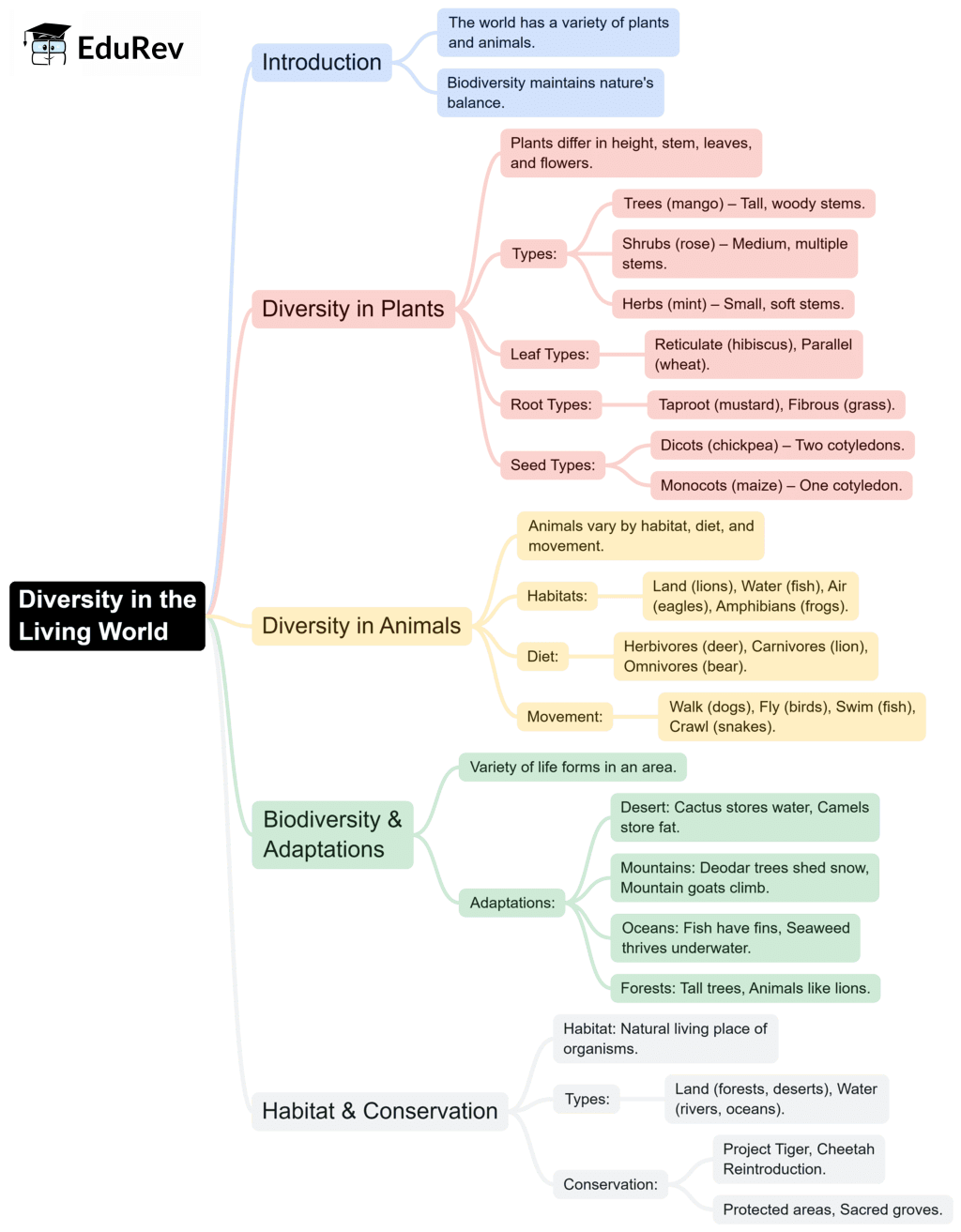Class 6 Exam > Class 6 Notes > Science Olympiad Class 6 > Mind Map: Diversity in the Living World
Mind Map: Diversity in the Living World | Science Olympiad Class 6 PDF Download

The document Mind Map: Diversity in the Living World | Science Olympiad Class 6 is a part of the Class 6 Course Science Olympiad Class 6.
All you need of Class 6 at this link: Class 6
|
34 videos|116 docs|89 tests
|
FAQs on Mind Map: Diversity in the Living World - Science Olympiad Class 6
| 1. What is biodiversity and why is it important in the living world? |  |
Ans.Biodiversity refers to the variety of life forms on Earth, including different species of plants, animals, and microorganisms, as well as the ecosystems they form. It is important because it ensures natural sustainability for all life forms. Biodiversity contributes to ecosystem services such as pollination, nutrient cycling, and climate regulation, which are vital for human survival and well-being.
| 2. How do scientists classify living organisms? |  |
Ans.Scientists classify living organisms using a system called taxonomy. This system organizes species into hierarchical categories based on shared characteristics. The main ranks in this classification include domain, kingdom, phylum, class, order, family, genus, and species. This method allows for easier identification and study of the immense variety of life.
| 3. What are the different levels of biodiversity? |  |
Ans.There are three main levels of biodiversity: genetic diversity, species diversity, and ecosystem diversity. Genetic diversity refers to the variation of genes within a particular species. Species diversity is the variety of species within a given area, while ecosystem diversity pertains to the different habitats and ecological communities in an environment. Each level plays a critical role in maintaining the health and resilience of ecosystems.
| 4. What are some threats to biodiversity? |  |
Ans.Biodiversity faces several threats, including habitat loss due to urbanization and deforestation, pollution, climate change, invasive species, and overexploitation of resources. These factors can lead to the extinction of species and a decrease in ecosystem health, which in turn affects human populations that rely on these ecosystems for resources and services.
| 5. How can individuals contribute to preserving biodiversity? |  |
Ans.Individuals can contribute to preserving biodiversity by engaging in practices such as reducing waste, using resources sustainably, supporting conservation efforts, planting native species, and participating in local clean-up activities. Educating others about the importance of biodiversity and advocating for environmental policies also play a crucial role in conservation efforts.
Related Searches

















